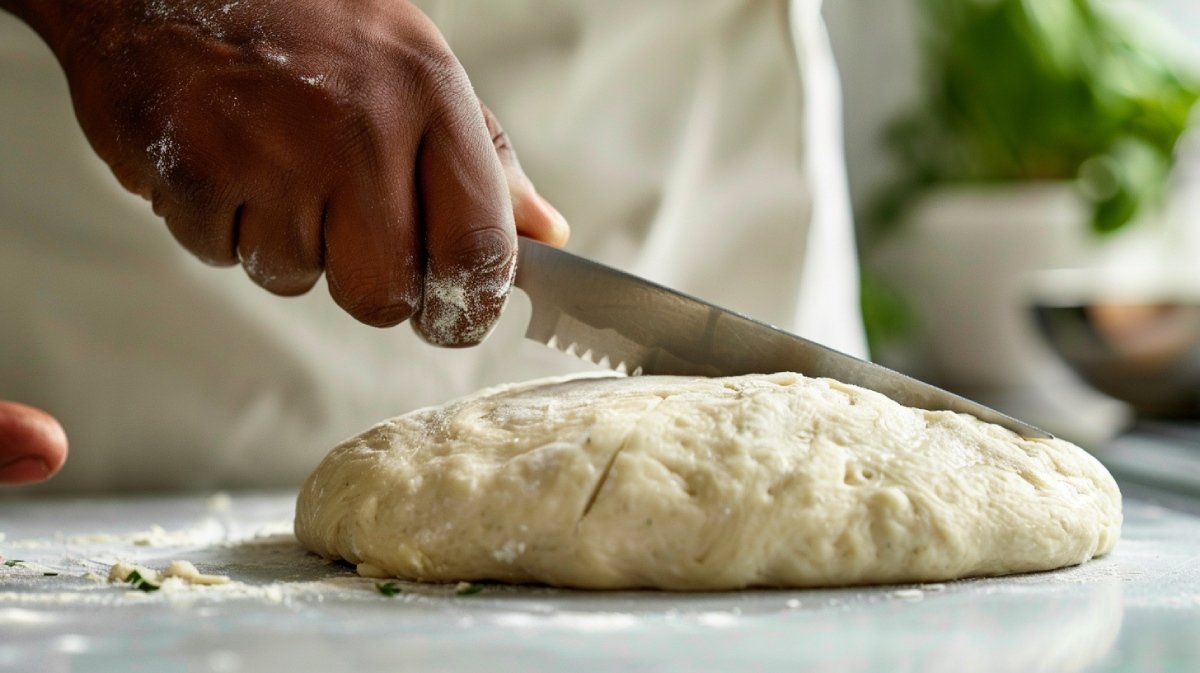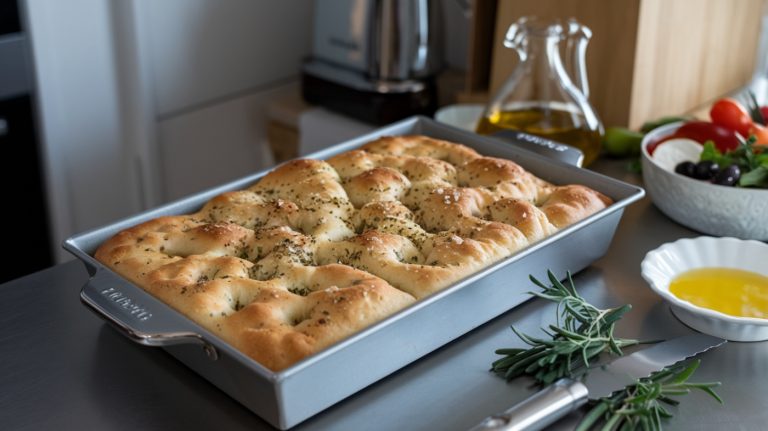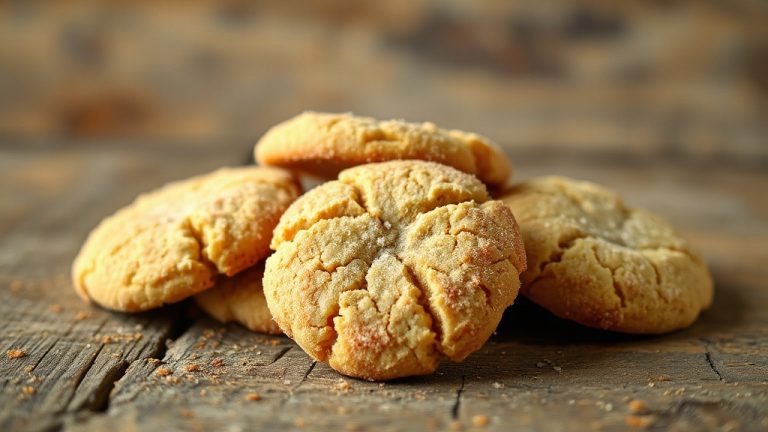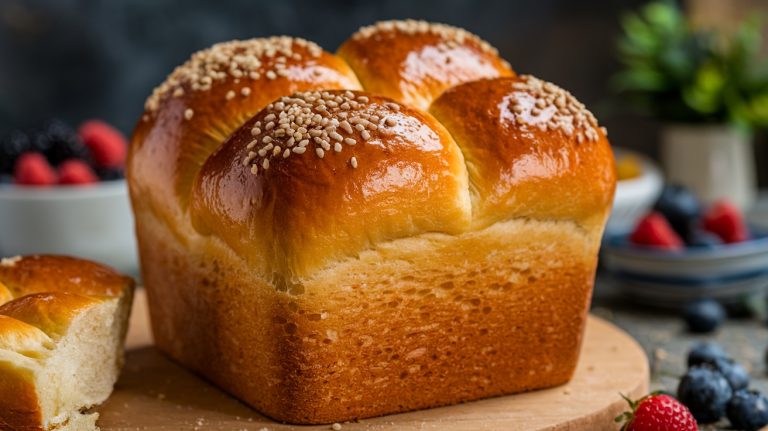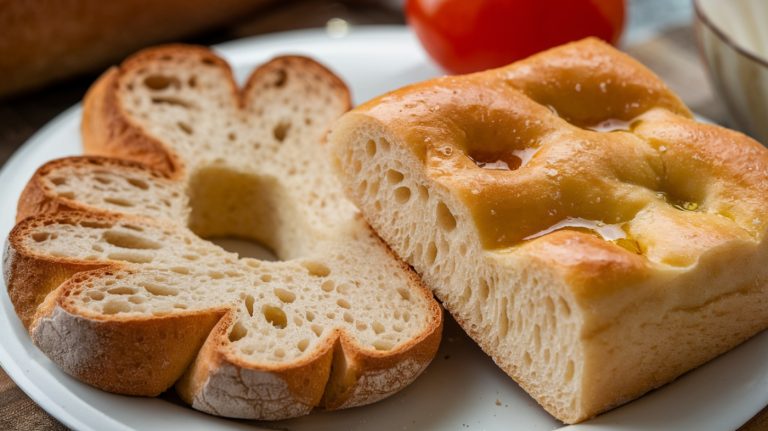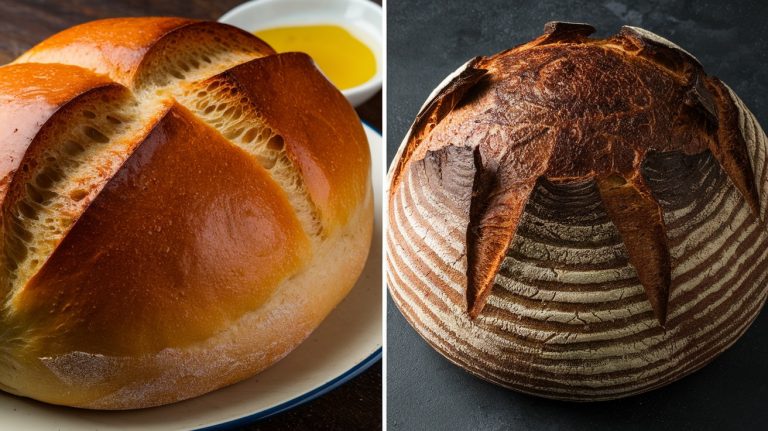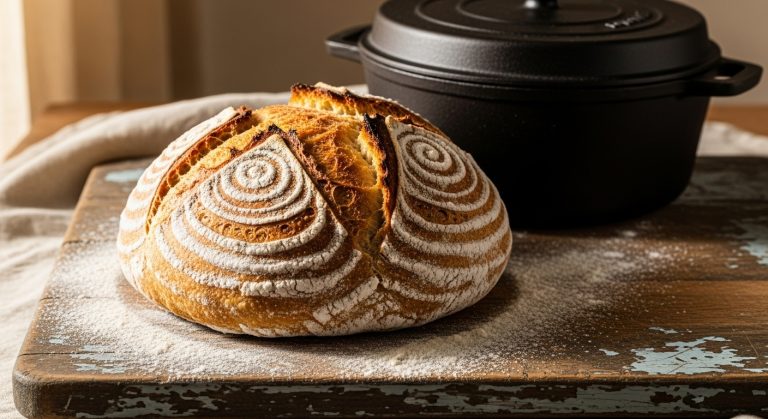How to Score Sourdough Bread With a Knife: Unlock the Secrets
You need to understand a few things to score sourdough bread successfully. Scoring creates controlled weak points for steam to escape, prevents uncontrolled splitting during baking, guides the formation of the “ear,” enhances controlled loaf expansion, and improves overall rise.
You’ll need a lame and a razor blade for clean cuts. Hold it at 30-45 degrees for maximum expansion, and score 1/4-1/2 inches deep. You’ll master these techniques and create visually appealing loaves with ideal rise, but you’ve got to keep refining your skills to take them to the next level.
Key Takeaways
- Use a sharp knife or a lame with a razor blade to make clean cuts and enhance expansion.
- Hold the knife at an angle of 30-45 degrees for optimal scoring depth.
- Score to a depth of 1/4 to 1/2 inch to allow for controlled steam release.
- Score cold dough from the refrigerator for easier handling and better results.
Purpose of Scoring Sourdough Bread
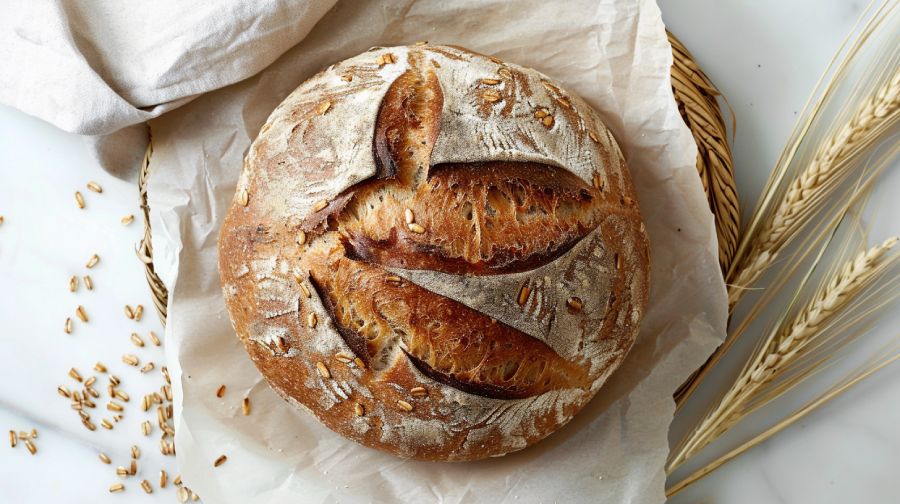
When you score sourdough bread, you’re creating controlled weak points in the dough where steam can escape, preventing uncontrolled splitting during baking. This vital step sets the stage for a beautifully risen loaf with an appealing crust.
As the bread bakes, these weak points guide the formation of the ‘ear,’ a signature characteristic of well-scored sourdough. By doing so, scoring facilitates the controlled expansion of the loaf, which in turn enhances the visual appeal of the final product.
The rise and crust of the bread are also greatly influenced by the scoring technique used. With proper scoring, you can showcase your baking skills and create a visually stunning, delicious loaf that’s sure to impress.
Key Tools for Effective Scoring
Use a lame, preferably with a sharp razor blade, to create clean, precise cuts on your sourdough bread, as it’s the most effective tool for scoring. A lame guarantees that the blade doesn’t snag or drag the dough, providing a smoother and more controlled scoring process.
Serrated knives can also be effective for quick, shallow cuts, but utility knives with thin, replaceable blades offer another option. Keep your blades sharp and clean to prevent ragged cuts that can compromise the dough’s structure.
Practice proper scoring techniques, holding the lame at the right angle to ensure the slit is deep enough for the dough to expand well during the baking process.
Mastering Scoring Techniques
To master the art of sourdough scoring, you must develop a sense of confidence and precision that will elevate your bread from mediocre to magnificent. Effective scoring requires a sharp knife and strategic technique. Here are some key points to keep in mind:
| Technique | Tips |
|---|---|
| Angle | Score at 30-45 degrees to maximize expansion. |
| Depth | Score 1/4 to 1/2 inch deep to avoid compromising structure. |
| Practice | Maintain a steady hand for clean cuts and ideal rise. |
| Timing | Score cold dough from the refrigerator for better structure. |
When you follow these guidelines and practice your scoring skills, you’ll produce sourdough loaves with enhanced visual appeal and a more balanced structure.
Common Scoring Mistakes
Even the slightest lapse in technique can lead to subpar scoring, so recognizing and addressing common mistakes is vital for ideal results.
Using a dull knife is a common error, resulting in ragged cuts and poor scoring. Scoring the dough after it has warmed up excessively can compromise the loaf’s shape and structure, affecting the final result.
Insufficient scoring depth, less than 1/4 inch, can hinder proper expansion, causing the dough to burst unpredictably. Additionally, over-complicating scoring patterns can lead to inconsistent results.
For best results, use a sharp razor blade to score your dough immediately before baking. This guarantees the dough to rise predictably, achieving a beautiful loaf.
Creative Scoring Patterns
Experiment with diverse scoring patterns, such as sharp angles, sinuous lines, or intricate details, to elevate the aesthetic appeal of your sourdough loaves.
Exploit the versatility of your sharp blade to create a range of styles that tantalize the eye. For instance, sharp, defined edges can accentuate the crust and produce an attractive effect.
Intricate designs, be they seasonal or themed, can add a personal touch to your loaves. This creative scoring approach allows you to manipulate depths and angles to see how they influence the final crust texture.
Frequently Asked Questions
Can You Score Sourdough With a Knife?
Yes, you can score sourdough with a knife, ideally a sharp serrated or utility knife, by making quick, confident cuts at a 30-45 degree angle to achieve clean and precise designs on the dough.
What Is the Best Way to Score Sourdough Bread?
You now hold the scoring key to enhancing sourdough bread visually and texturally. For precise cuts, use a sharp knife or lame, achieving a 1/4 to 1/2 inch depth.
Can I Use a Knife Instead of a Lame?
You can use a knife instead of a lame to score sourdough bread. Opt for a serrated or utility knife, maintaining precise angles and making quick, confident cuts to achieve clean scores without compressing the dough.
How to Score Sourdough Without a Tool?
“When you don’t have a specialized tool, a sharp serrated knife or utility knife can step in. Alternatively, hold kitchen shears at a shallow angle for quick snips. Keep that blade clean and sharp for best results.”
Scoring Matters: Preventing Cracks and Ensuring a Flawless Oven Spring
Scoring sourdough bread isn’t just a decorative step; it’s essential for guiding the way your dough rises. Without it, the loaf can crack and lose its structure, especially during oven spring.
Next time, try using a bread lame and the confidence gained from practice.
Take the double slash, for instance – it helps even whole wheat loaves open nicely.

